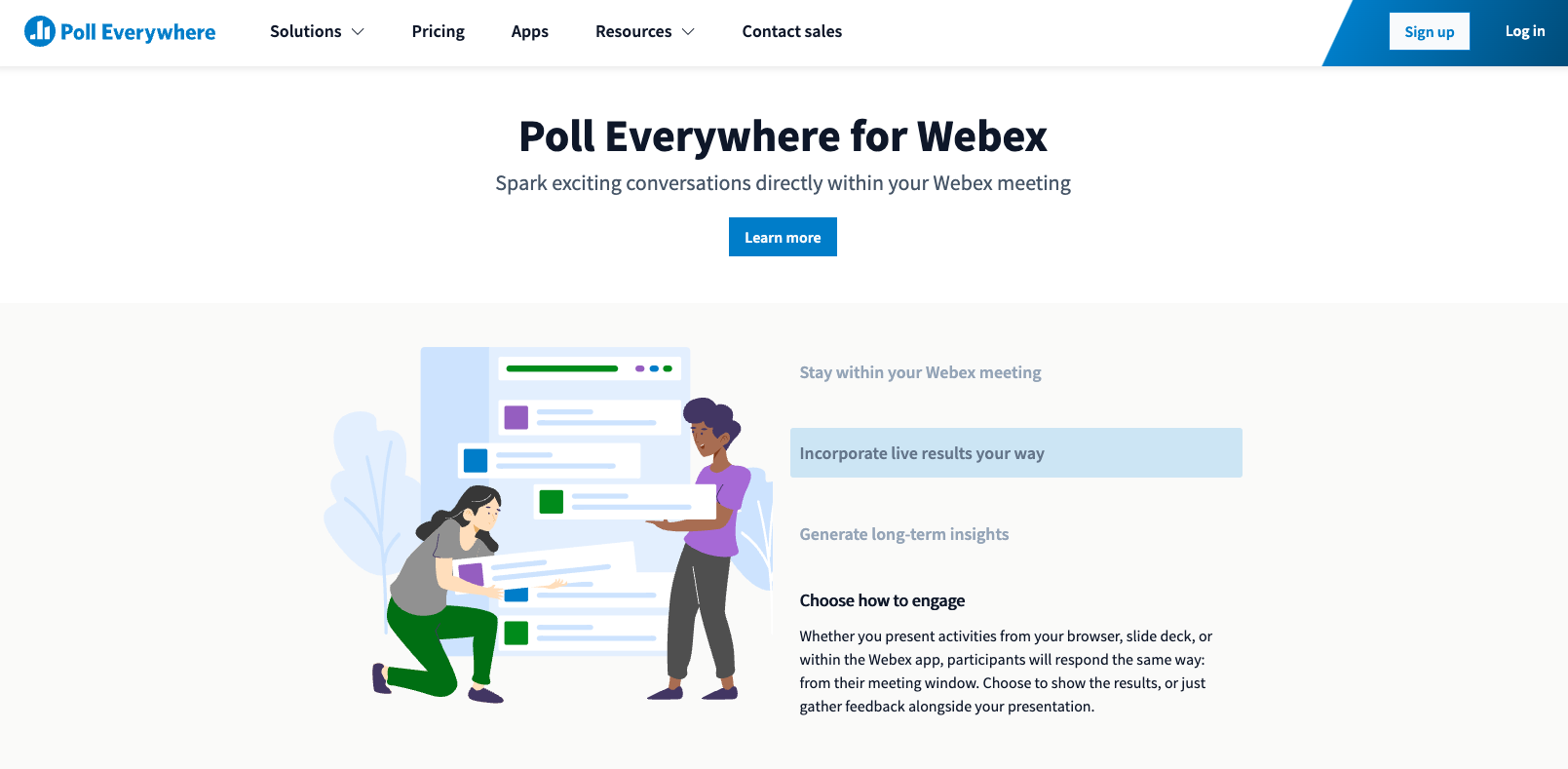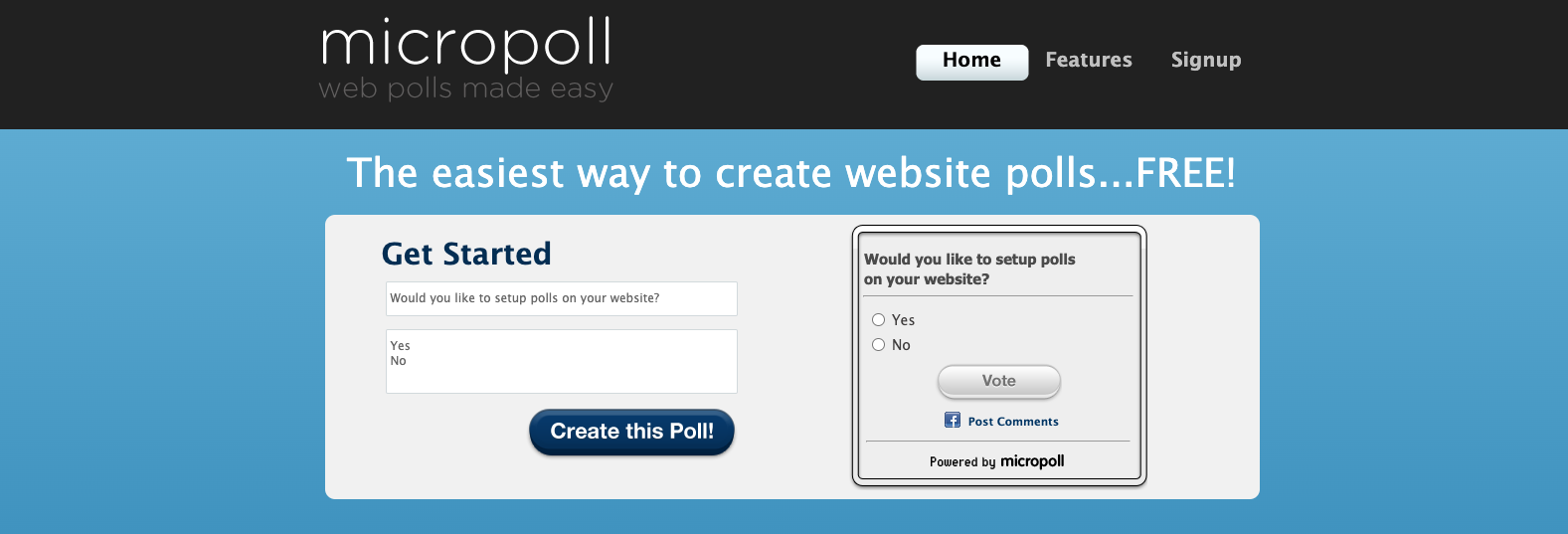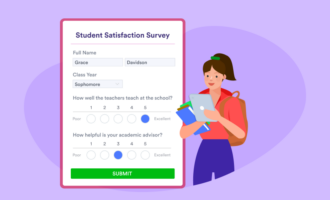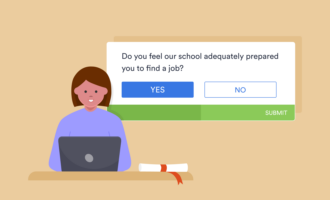Top classroom polling tools
The classroom is no longer a place for one-way communication, where the teacher lectures the students without any engagement from their side. Instead, it’s now a place where students can communicate with their teacher and with each other in multiple ways. Using tools in the classroom to facilitate sharing feedback makes it easier for students to share their thoughts.
Classroom polling tools are a great way to get students actively involved in sharing their feedback with teachers on various topics, such as self-evaluation, learning outcomes, and more. Here are the top classroom polling tools to try out with your students.
Pro Tip
For an insightful look into the future of higher education, explore “8 Top Trends in Higher Education to Watch in 2024” on Jotform’s blog.
Top classroom polling tools to engage students
1. Jotform
Jotform is a form-building software that can be used by teachers, administrators, and students alike. Offering hundreds of form templates, Jotform makes creating educational forms and polls simple. It features an intuitive drag-and-drop form builder, in addition to robust security features.
Teachers can also use Jotform Tables to organize, analyze, and understand the data they collect from students. Plus, Jotform offers a no-code app builder that teachers can use to create engaging and useful apps to facilitate learning.
Jotform has a free option with a limit of five forms per month, in addition to four tiers of paid plans starting at $34 a month.
2. Microsoft Forms
Microsoft Forms is a great way to create polls, quizzes, and more for students, especially in educational environments that use the Microsoft suite of products. This tool is useful for in-person and online settings to engage students and enrich the learning environment.
Teachers can add images and videos to their poll questions, as well as export the students’ answers to Microsoft Excel to analyze them for actionable insights. Microsoft Forms is intuitive and easy to use, and it doesn’t require any form-building experience.
Microsoft Forms is included with the Office 365 Education suite of products, and anyone who has a Microsoft account can use it for free.
3. Google Forms
Google Forms is an intuitive form builder that’s part of the Google suite of products. Its simple user interface is easy to use and can make classroom polling an integral part of the learning environment. In addition to creating a variety of question types, teachers using this tool can actually provide feedback to students in the form of videos. They can also automate grading for certain types of quizzes, such as those with multiple choice questions.
Google Forms is free to use for individual Google users with a Google account, and it’s also available as a part of Google Workspace, which starts at $6 per month.
4. Poll Everywhere
Poll Everywhere offers live online polling and is designed to engage audiences in multiple locations, such as with remote online learning or educational conferences. Creating a poll is easy through desktop or mobile devices, and users can send responses via text, shared links, or the Poll Everywhere website or app. Poll Everywhere displays responses to polls in real time through an eye-catching user interface.
It has a free option with a maximum audience size of 25, as well as four tiers of paid options that start at $120 per year.
5. MicroPoll
MicroPoll is an ideal classroom polling tool for educators who use their own website or learning management system. You can embed MicroPoll directly into the site to poll students during online lessons. You can also easily customize polls with this tool, and it offers several types of question-and-answer formats.
You don’t need to have any technical knowledge to use MicroPoll, though some coding experience can come in handy for advanced functionality.
MicroPoll allows you to create an unlimited number of surveys with its free plan, and it offers two tiers of paid options with advanced features starting at $99 per month.
Engaging students and getting their feedback can seem challenging, but it’s much easier when you have the right tools at your disposal. Are there any other tools you find helpful for classroom polling? Be sure to share them in the comments.
Photo by Katerina Holmes










































































































Send Comment: